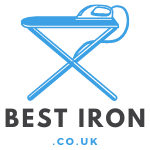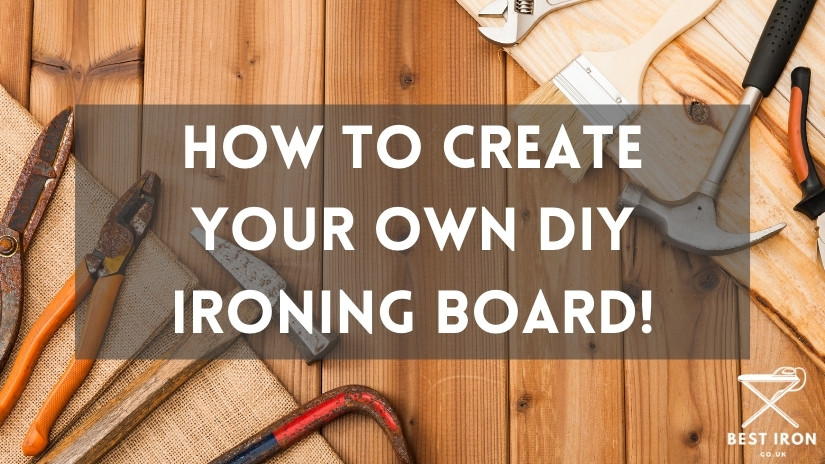Minimalistic homes are incredibly popular nowadays, and this doesn’t just involve small apartments either. People dislike clutter, and if something doesn’t have to be there, getting in the way of everything and taking up a load of room, why keep it?
A lot of people have this mindset when it comes to ironing, and in particular, ironing boards. If I’m totally honest, I can’t blame them either – some ironing boards are just far, far too big, and they are a pain to store and keep out of eyesight!
Fortunately, ironing board manufacturers are jumping to the rescue of those in need of a small, portable, and sometimes even wall-mounted ironing board. Which is great, and you should check those out if that is what you are looking for. However, if you fancy saving some money, and having a little bit of DIY fun with it, why not make your own portable DIY ironing board?
Making your own ironing board/ironing table by following these steps is not only a fun thing to do in your free time, whilst saving you money, it also allows you to create an ironing surface that not only fits you perfectly but fits in your home perfectly with the space you have available.
Table Top Ironing Board – Step by Step Guide
If you are looking to create a small portable ironing board that can fit in a multitude of convenient places around your home then you will 1. want to follow these step by step instructions, and 2. get yourself the tools and supplies listed below:
- A piece of plywood that will act as the board itself, so choose the right size for your DIY board. A rectangular piece is fine unless you want to start trying to create the shape of a traditional ironing board which will require you to custom cut the wood.
- A piece of wadding (cotton batting), both cotton batting and polyester batting are recommended, with cotton fabric perhaps being the best but any type will suffice. The wadding must be bigger than the plywood board and you will need enough to double up on it for thickness and padding.
- A double layer of fabric, preferably thick (this will be the surface you iron on).
- A staple gun.
- A pair of scissors.
Fortunately, you can probably find most of these supplies either in your garage, perhaps a relative’s house, or online/in-store for not too much money. Also, if you needed any further convincing that making your own ironing board is a fantastic idea, here you go:
- It is easy and quick.
- Cheap and cheerful.
- You can make an even more stable board than you can buy!
- Perfect for minimalists and people living in small spaces or with little storage room.
- It is easy to replace the top layer if it gets marked or stained.
- You can literally choose whichever size board you would like.
Step 1 – Gathering Supplies
The first and most important supply you will need to source is plywood, the plywood will act as the surface area of your ironing, so it will need to be slightly bigger than the finished size you are looking for and will cut out. For example, if you live on your own in a small apartment, then perhaps you will want a mini ironing board.
So, I would advise purchasing some pre-cut plywood of the size you are looking for, you can easily do this by going to local DIY shops such as Homebase or perhaps B&Q. Most places will either have the size you are looking for, or offer to cut the wood for you.
Next, you will want to gather your wadding which can be purchased at your local fabric shop or online.
Step 2 – Prepare Your Materials
Place your plywood on top of the fabric and wadding you are going to use, you want the desired face of your ironing board to be facing down (on top of the fabric and wadding).
Step 3 – Begin The Process
You will now want to begin what I call “the wrapping process”, which is where you will fold the wadding and the other fabric over the board, from one long side to the other long side. After doing this, use your staple gun to secure the fabric to the underside of the board, keeping everything secured and positioned tightly.
Next, cut off any of the excess wadding or fabric, however, you do still want an extra inch of material protruding from each side, including the corners. You should also try and fold underneath the fabrics, so that you are creating soft edges and not hard, wooden edges.
Step 4 – Wrapping The Other Side
Next, you will want to start wrapping the wood from the other long side with the fabric and wadding, trimming off the bulk that will end up at the backside of the board. Tuck in the edges of the fabric inwards, towards the board. Either you need to hold the fabric as tightly as possible while stapling, or you could get somebody to hold them for you if you can, and again, cut off the excess material, leaving the corners covered.
Step 5 – Fixing Up The Corners
Pull all four corners down so that they are flat, and then staple them in position. After you have completed this step you can trim away any of the excess bulk.
Step 6 – The Final Step
So, you are almost at the end of your DIY ironing board adventure, I do urge you not to rush your work when it comes to any of these steps, and in particular the final step. Use your staple gun to make sure everything is tight and secure, but only on the backside of the iron, you certainly do not want any staples appearing on the surface of your new ironing board.
It is important that the staples are firmly in the wood and not protruding, so if any look that way, remove them with pliers and put a few more staples in the ironing board that are secure.
Now, you have created your very own perfect tabletop ironing board that you can use as an ironing station in any room within your household, and store using minimal space! However, you will certainly need a good ironing board cover to accompany it. You can find several online at a fair price, or at your local ironing shop or supermarket. Be sure to keep an eye out for my DIY ironing board cover tutorial next!
Another awesome thing is the fact that you can now do all of your ironing chores whilst sat down, which is great after a long day of standing up and moving around – you never have to iron stood up again!
Additionally, if all of this sounds like too much hassle for you, and you simply want to buy a trusted, and modestly-priced ironing board online, then have a look at some of the best ironing boards of 2024 with their reviews and best features.

I am a content strategist and the administrator of this website. Professionally, I am an assistant Electronics professor at the University of Chester. I love to read about my profession and have a lot of interest in various home electronics appliances. Freely contact us if you have any queries regarding steam irons and other electronic devices.

